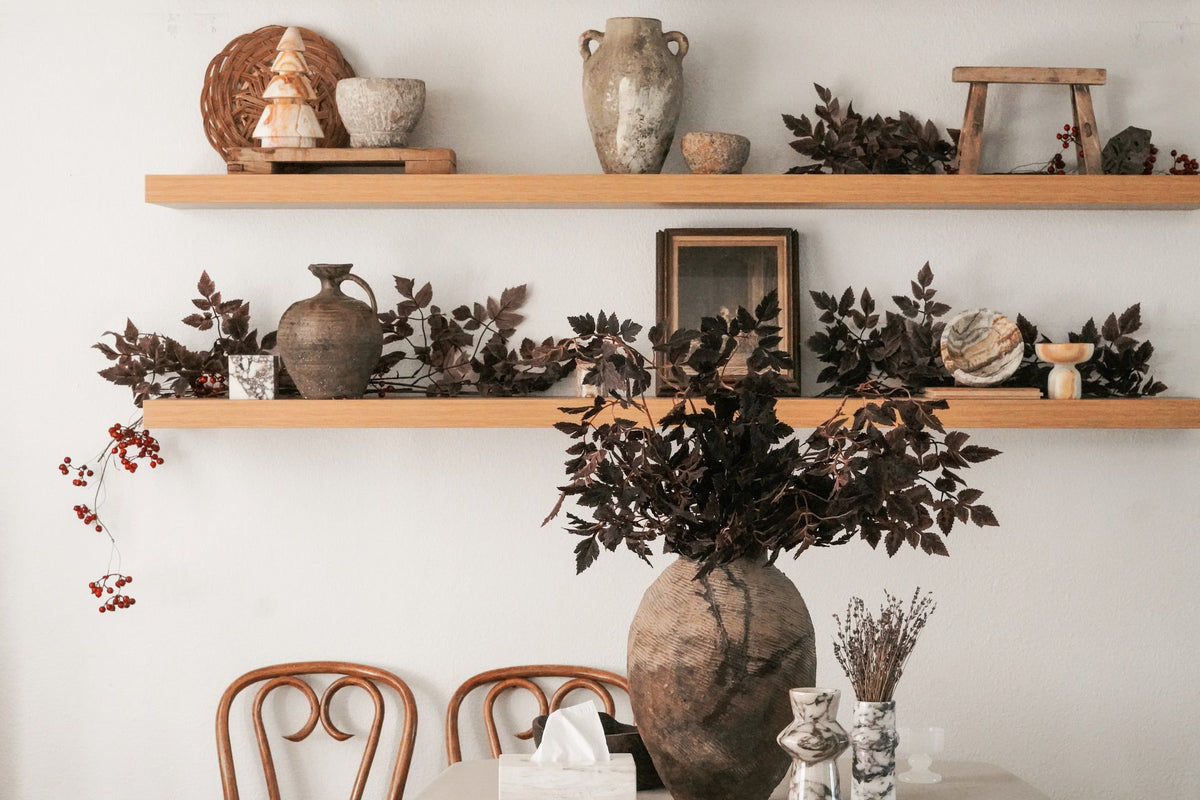Chinese vintage elm wood furniture offers not only a piece of history but also timeless elegance, making it a perfect addition to rustic, farmhouse, and Wabi-Sabi interiors. With its natural durability, warm tones, and rich grain patterns, elm wood has been a favorite among Chinese artisans for centuries. Originating from northern China, where elm trees are abundant, this wood was used extensively during the Ming (1368-1644) and Qing (1644-1912) dynasties to craft everything from simple benches to intricate cabinets.
A Brief History of Elm Wood Furniture
Elm wood was highly regarded in traditional Chinese furniture-making because of its flexibility, strength, and beautiful grain. Ming Dynasty furniture emphasized clean lines, simplicity, and perfect proportions, favoring a minimalist aesthetic that resonates well with modern tastes. On the other hand, Qing Dynasty furniture became more elaborate, with intricate carvings and decorative elements that reflected the culture’s shift towards opulence and detail.
Despite these differences, elm wood remained a constant due to its durability and accessibility, particularly in northern China. Over time, many elm wood pieces have aged naturally, developing cracks, wear, and patina that only enhance their charm. This aged quality makes vintage elm wood furniture highly desirable today, especially as people seek to incorporate authentic, storied pieces into their homes.
How Elm Wood Furniture Complements Modern Design Styles
-
Rustic Style
Vintage elm wood furniture perfectly embodies the essence of rustic design, which focuses on natural, raw, and organic elements. The weathered look of elm wood, with its visible grain patterns and natural imperfections, adds an earthy, grounded feel to any rustic space. Whether it’s a distressed elm wood dining table or a vintage bench, these pieces exude warmth and authenticity, which are key to achieving the rustic aesthetic. -
Farmhouse Style
In farmhouse-style interiors, simplicity and practicality reign supreme, with an emphasis on comfort and coziness. Elm wood furniture’s durability and time-worn look align seamlessly with this approach. Large farmhouse dining tables, sturdy benches, and storage cabinets made from elm wood reflect a sense of craftsmanship and tradition that enhances the farmhouse vibe. These pieces often have a rugged, handmade quality that makes a home feel lived-in and inviting, while also providing functionality. -
Wabi-Sabi Aesthetic
The Wabi-Sabi philosophy finds beauty in imperfection, age, and authenticity. Elm wood, with its natural cracks, weathering, and patina, is the perfect material for embracing this aesthetic. Instead of polished perfection, Wabi-Sabi celebrates the rustic charm that comes with time, making vintage elm wood pieces ideal for this style. Whether it's a cracked elm wood stool or a simple, well-worn side table, the furniture’s imperfections and history are what make it special.
Elm wood furniture invites a sense of calm and reflection, aligning with Wabi-Sabi’s focus on mindfulness and the transient nature of objects. Incorporating elm wood in your Wabi-Sabi-inspired home not only adds visual interest but also infuses your space with a sense of harmony and acceptance of life’s imperfections.
The Versatility of Elm Wood in Interior Design
One of the greatest strengths of Chinese vintage elm wood furniture is its versatility. Whether you’re furnishing a modern home, a rustic cabin, or a minimalist retreat, elm wood can complement a variety of styles and settings. Its natural texture and warm tones bring balance and softness to spaces dominated by sleek, contemporary lines, while its aged character adds depth and history to more minimalist environments.
In rustic and farmhouse interiors, elm wood furniture can be the perfect grounding element, providing a sense of stability and connection to the past. The warm, rich hues of elm wood also pair well with neutral color palettes and natural materials like stone, linen, and wool, all of which are staples in these design styles.
For Wabi-Sabi interiors, the emphasis is on finding beauty in simplicity and authenticity. A single vintage elm wood piece can be the focal point of a room, reflecting both craftsmanship and nature’s influence over time. The raw, untouched look of these pieces often resonates with those who appreciate the imperfections and unique character that vintage elm wood offers.
Incorporating Elm Wood Furniture into Your Space
Here are some ideas on how to incorporate Chinese vintage elm wood furniture into your home:
-
Elm Wood Benches: A weathered elm wood bench can serve as a statement piece at the foot of the bed, in an entryway, or even as seating at a dining table. Its simple, rustic style adds character and functionality to the space.
-
Vintage Cabinets and Sideboards: An antique elm wood cabinet not only provides storage but also acts as a beautiful focal point in living rooms, dining areas, or even kitchens. The unique grain and worn finish add charm to farmhouse-style homes.
-
Elm Wood Tables: Large, vintage elm wood tables are perfect for rustic and farmhouse dining areas. The natural wear on the wood surface tells a story, bringing depth and history to your gatherings.
-
Accent Pieces: Smaller elm wood items like stools, pedestals, or side tables can add just the right touch of Wabi-Sabi charm to your space. These pieces highlight the beauty of imperfection and bring a subtle yet powerful presence to a room.
Conclusion: Timeless Charm for Modern Homes
Chinese vintage elm wood furniture is not just a relic of the past—it is a timeless treasure that enhances modern interiors. Its ability to blend with rustic, farmhouse, and Wabi-Sabi styles makes it versatile, functional, and deeply aesthetic. Whether you’re drawn to its durability, its natural beauty, or the rich history it carries, elm wood furniture adds warmth, authenticity, and elegance to any space.
By incorporating elm wood pieces into your home, you are not only creating a unique and inviting environment but also preserving a piece of craftsmanship that has stood the test of time.





